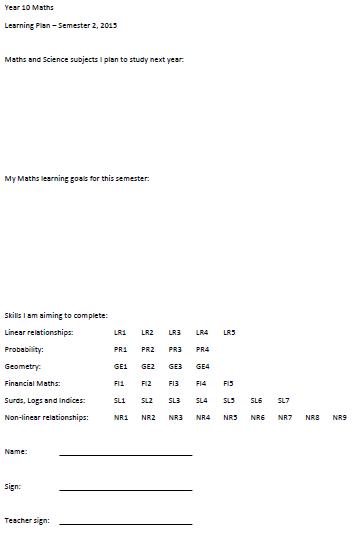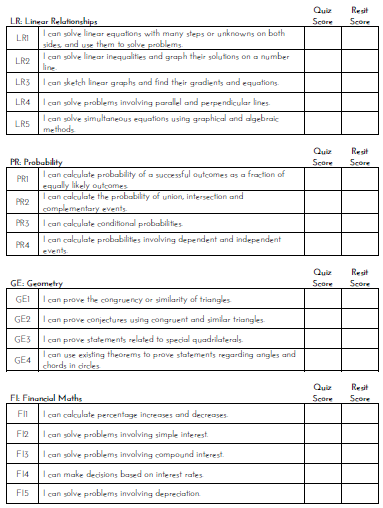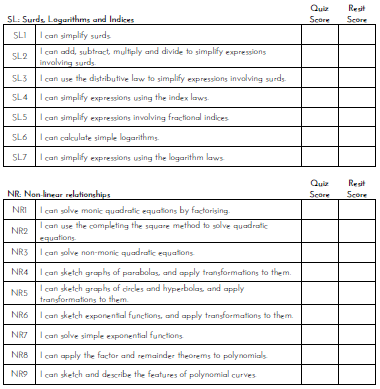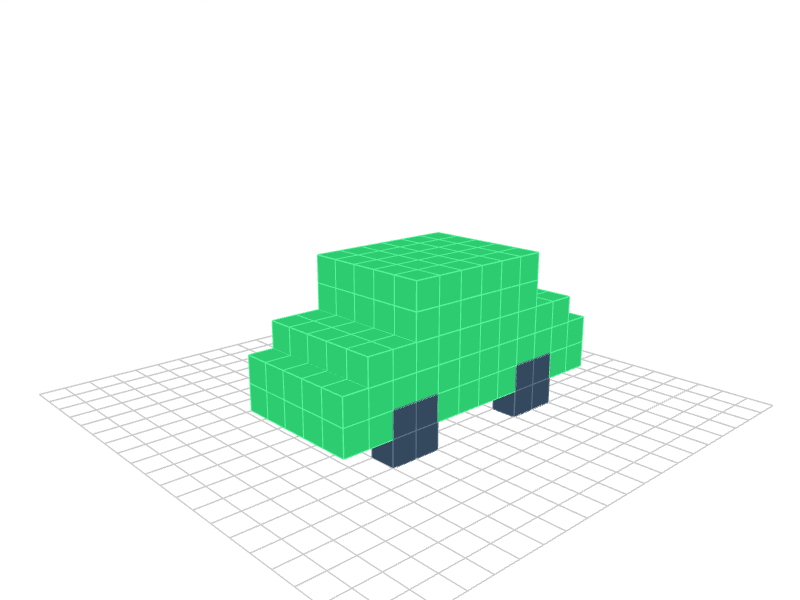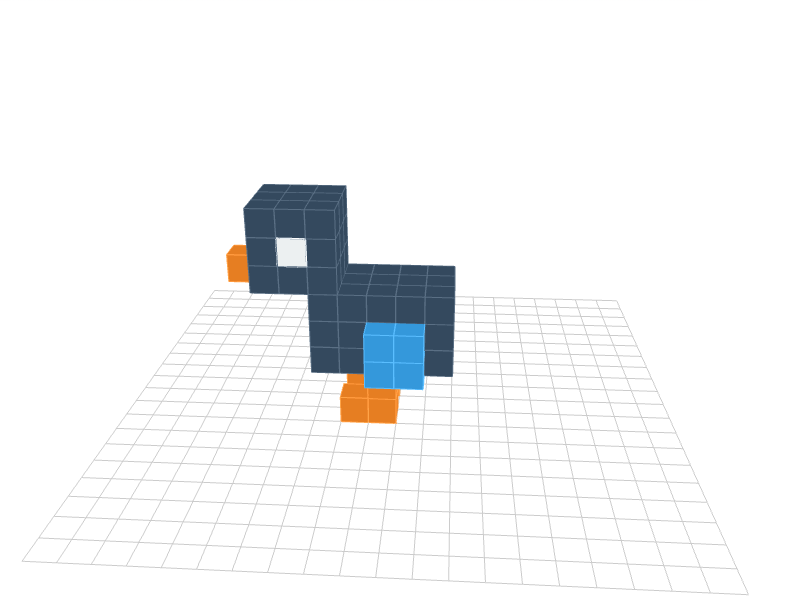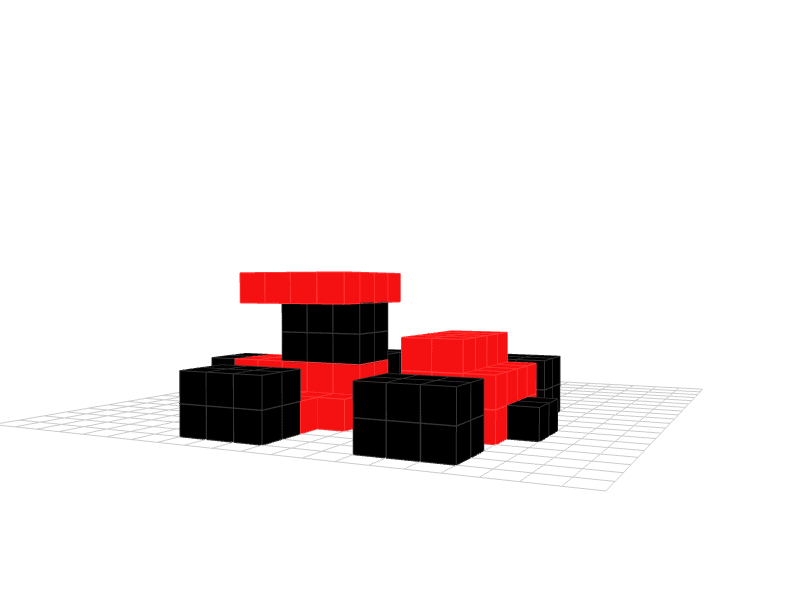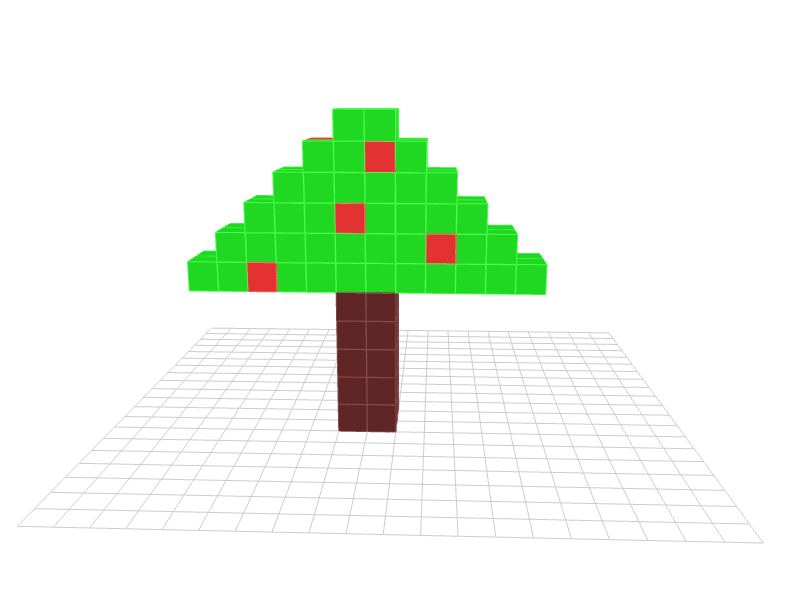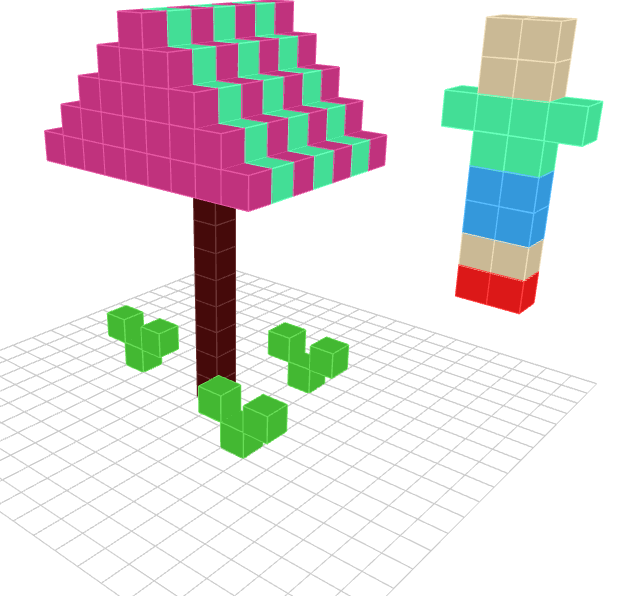I’ve been left in an interesting situation with my Year 10 class. This is their last semester before moving into VCE or VCAL, where they get to choose their own subjects. This means that they’ll be studying a variety of maths subjects, at different levels of difficulty. Not to mention that under the Australian Curriculum, maths already has an extra level of content beyond Year 10 (“10A”).
Further complicating things is the fact that I only took over this class halfway through the year.
I want each student to have the best preparation possible for their plans for Year 11. How a student is planning to continue with their study has a lot of bearing on the content they need to be working on now.
For instance, the students who want to study Mathematical Methods (the second hardest maths in VCE behind Specialist Maths), or are considering it, would be best served by strengthening their algebra skills, and covering some of the material in 10A. That includes indices, logarithms and polynomials. The first topic I cover in Year 12 Maths Methods is the Remainder Theorem. I would love if these kids could be exposed to that in Year 10.
At the other end of the spectrum, we have the students who want to do VCAL Numeracy, which focuses on basic numeracy and skills needed for employment in trades or similar. These kids really would not be thrilled with me if I tried to teach them about logarithms.
And in the middle, we have the students planning on General Maths, and eventually Further Maths in Year 12. Even within this group there’s a wide range, from those who aren’t particularly fond of maths but who know it’s important, to those who could possibly do Methods if they really wanted to, but have decided not to. I still want to extend these students where I can, and not rule out the possibility of changing their minds during the subject selection process.
In a large school, students could be divided into classes that would allow them to focus on the areas most relevant to their future. But in a small school like mine, we only have the one Year 10 maths class. Instead, I need to find a way to manage the possibility of students all doing different work.
The Plan
I want to have students decide their own plan for what they would study. I gave each student this template:
The first two sections, I had students complete themselves:
- Maths and Science subjects I am planning to study next year.
- My Maths learning goals for this semester.
The next section was filled in by the student and myself together. Over a few lessons, I sat down with each student and discussed what their plans are, and we negotiated the skills I’m expecting them to complete this semester.
The codes that are listed match my SBG skills. I identify each unit with two letters, then each skill with a number. This is the same class I first tried SBG with last year, so they’re used to the system. At the very start of this term, they were given this complete list of the skills for the semester:
Reflections
This has worked well for the most part, but is not without some issues. Students know what is expected of them at all times, and have been able to work at their own pace. This class are usually very good at taking responsibility for their own learning, so it hasn’t been too hard to motivate them. For instance, I had one student work on one unit while in class and work on another one in her free lessons, because she knew she was going to be absent for an extended period of time.
But there are still many things that need to be improved with this strategy:
- While I usually try my hardest to get away from using the textbook, it is a lot easier to assign a list of textbook questions to work on than to find different tasks for each student.
- Collaboration becomes that much more difficult, because students are in different places.
- A few students feel like they can just cruise, rather than keep pushing themselves.
- I can get many students seeking help from me for a variety of different topics all at the same time. And sometimes my students get very impatient with me.
Though as it turns out, some of that has a way of sorting itself out. As students are waiting for me for help, they start helping each other. This has a tendency of pulling the pace of the faster students back to the rest of the group, while they gain the benefits from explaining the work to others.
I’m trying to reset everyone’s pace a little bit for the start of next term. Most kids are working on Probability, or Surds, Logs and Indices, so I’ve asked them to complete PR2 or SL2 over the September break. Hopefully from then on, it’ll be easier to set deadlines for groups of kids and keep them working on the same skills together. This will mean that I can give them collaborative activities to introduce topics, and save the textbook for practice questions.
Another issue I’ve found is with my own organisation, and making sure I have quizzes written before students get to those skills. But hopefully the break will help there again, and allow me to get out ahead with my quiz writing a bit more.
I would love some comments about all of this, whether this seems like a great or terrible idea, and where there is anything else I should be improving. I’m still not completely convinced this system works, but I’m optimistic that it is allowing students to work to their own needs and strengths in my class.
I’m definitely not advocating this as a good idea in most general. I would almost always prefer having students work on the same activities, and differentiate within those activities. But for this specific situation, allowing students to tailor their own learning path seemed like something I should at least try.
